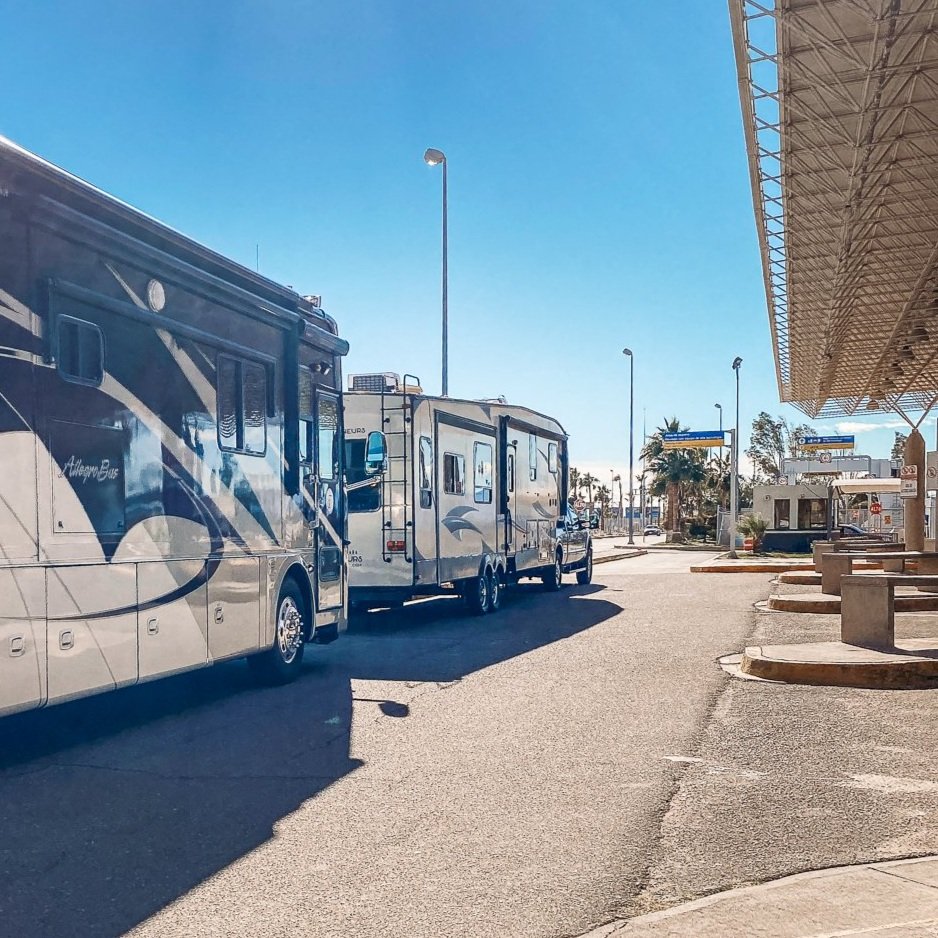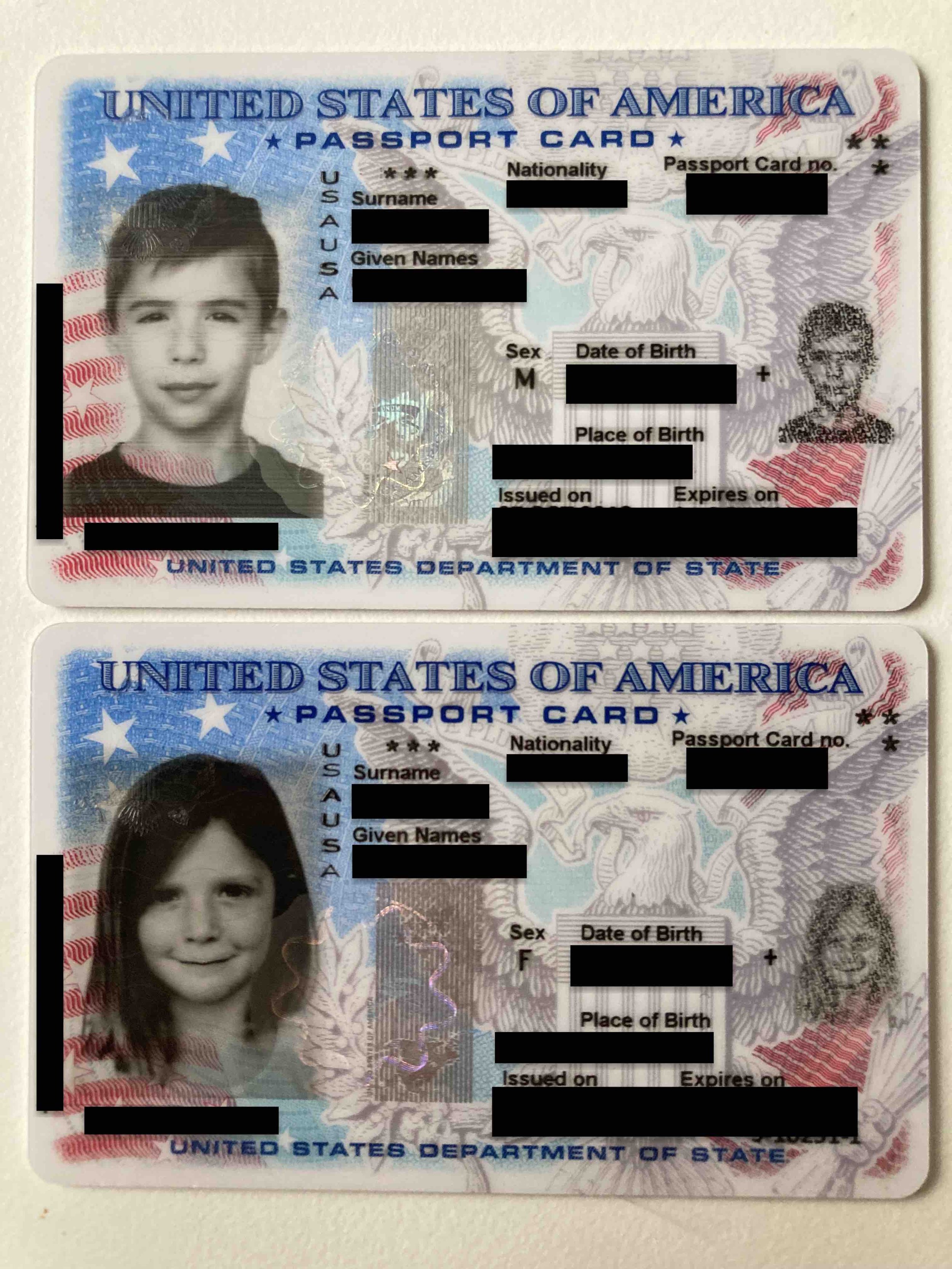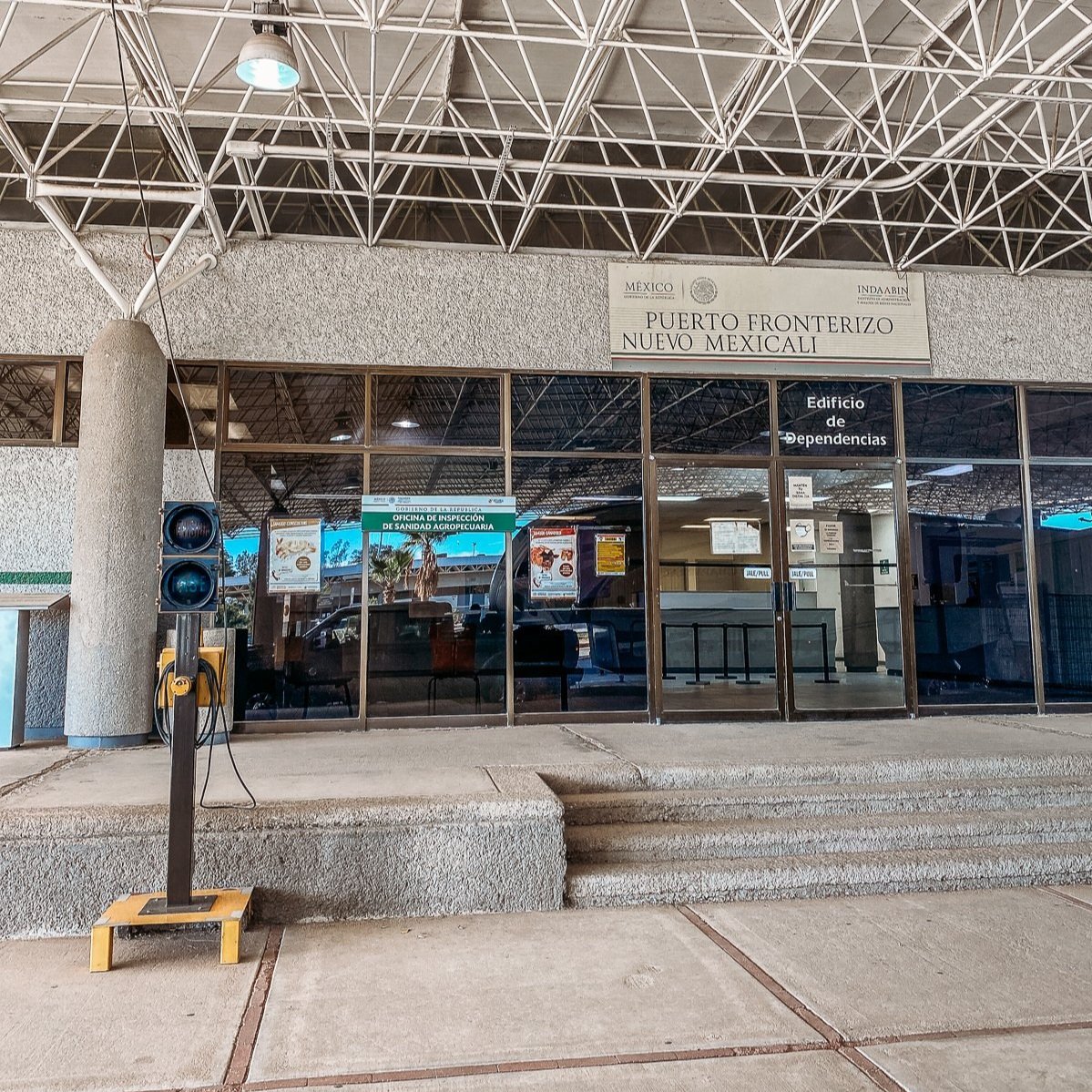What It's Like To Drive Across the Baja Mexico Border in an RV
Crossing the border into another country can be intimidating.
What documents do you need?
What are you not allowed to bring?
How long will it take?
These are common questions many people have, including us! In the past year we’ve driven and walked across the border five times at 3 different border crossings. We’ve complied some helpful info you’ll need to know if you plan on crossing into Mexico by land!
Documentation
Passport Cards
Passports & Passport Cards
A passport or passport card is required for anyone over 16 years of age to cross the border by land. Passport cards are good for land travel only, and only to cross over to Canada and Mexico to and from the US.
Original birth certificates have been used for children to cross the border for years, but recently, I’ve heard reports that officials are getting more strict with that, and giving people a hard time who try and use a birth certificate to cross and in some cases won’t allow it at all. The official website says that U.S. citizens must have a passport to enter.
One interesting thing about Mexico is that things are a lot less black and white as they are in the U.S. You might get an official who will let an adult in with only a birth certificate. You may be allowed to have kids enter with a birth certificate with no problem, or you might get denied unless you have a passport or passport card.
One important thing to note is that your passport/passport cards must be valid for at least 6 months in order to get an FMM card (Read more about FMM cards below).
The fiirt year we crossed our kids had passport cards and Aaron and I had passports. We’ve since all upgraded to passports and we’ve never had any issues.
FMM
An FMM is the second necessary documentation you’ll need when traveling to Mexico. This is basically an unofficial tourist Visa.
You can get this one of two ways.
The first option is ordering it online in advance, printing it out and filling it out in advance. You still have to make a stop and get it stamped after crossing the border in order for it to be valid. You will also have to show the receipt for each FMM or they could make you pay again. The pro to this option is that you save a few minutes of paperwork after crossing, and you know exactly how much it will cost in advance. The con is that there are many fraudulent sites that will take your money and not give you a real FMM or one at all, and it’s possible the attendant will accuse it of being fake and charge you for another one once you’re at the desk to get it stamped.
The second option is purchasing and filling it out once you cross the border. The pro for this option is you know you will only pay once and it is guaranteed to be the real, official FMM. The con is that it takes a few more minutes, and if you don’t already have pesos, you might pay a high exchange rate. Some people have reported they had the option to pay with credit card, but we were told cash only. *2024 update- it appears taking credit card only is the new norm. However, always have cash as well just in casae the card machines are down.
We always choose the second option, to purchase them in person.
The current price of an FMM as of January 2024 is $687.00 Pesos (appx U.S. $38) per person; FREE if the trip is 7 days or less and you cross by land; May be issued for up to 180 days. We recommend asking for it to be valid for 180 days even if you don’t plan on staying the full 6 months, because many people have fallen in love and ended up staying later! It’s the same cost no matter how long you stay. We had to show our passports/ passport cards to get the FMM and fill out some information such as final destination (we always just put Cabo, as it’s the furthest south you can go) birthdate, etc. signing it at the bottom. They never have cared if only I go in and fill them out for the family, even signing for each person. Now that the kids are older they go in and help me with this part while Aaron stays outside and stays with the guards for the RV inspection.
Vehicle Registration
You will have to show vehicle registration for any vehicles you’re driving or towing into Mexico, so have it ready when you pull up to the border!
Mexican Insurance
You must get Mexican insurance when you drive in Mexico. You need it for any vehicle you’re driving and towing. We have used Lewis and Lewis each time we drive in Mexico, and have found them to have the best rates and great reviews. Thankfully we’ve never had any insurance claims, but we recommend them based on price and reviews we’ve read. You can easily purchase this online and print out your policy in minutes. Insurance costs are based on the value of your vehicles. You get the most for your money the longer policy you get. For instance, a 6 month policy isn’t much more than a 3 month one so if you think you might want to stay longer, consider getting a longer policy.
Prohibited Items
There are actually quite a few prohibited items that you can’t take across the border. Here are a few:
Guns and ammunition (Guns are illegal in Mexico. You will be put in jail for having one.)
Extra gasoline or fuel. You can take an empty gas can and fill it in Mexico.
Pepper spray
Knives and machetes over 8”
Marijuana, medicinal marijuana, marijuana products, marijuana seeds or spores, or marijuana extracts
Plants
Soil
Vegetables, their products and by-products
Fresh meat of any species
Fresh cheese
Fresh Fruits
Fish
Eggs
Live turtles
Grains (corn, bean, rice, quinoa, wheat, sesame, sunflower, green bean, lentil, etc.)
Fresh chestnuts
This is not an exhaustive list, but some of the more common items.
Security Check
The vehicle check point coming into Mexico.
When you drive up to the border crossing, you will drive past a series of cameras that scan your vehicle as you drive through.
If you are declaring anything, you will need to go into the lane that is marked “Autodeclaracíon”.
If you aren’t declaring anything, you’ll head to the lane marked “Nada due declarar.”
When we crossed with our RV in December 2021, we were actually waved over by the border patrol to go through the autodeclaracíon (probably because of our size), even though we weren’t declaring anything. Obviously, you’ll want to go where you are directed regardless of the signs!
*2024 update- the autodeclaracíon line now has a sign that says RVs need to go through that line. They will ask if you have anything to declare, and you simply say no.
This picture shows where our vehicles were inspected (see our truck and RV in the window reflection) and the office where you get your FMM cards.
Once we pulled up under the large overhang (It was huge. Plenty of clearance for any size rig), we were motioned to stop and roll down the driver’s side window. They asked for our vehicles’ registrations and asked Aaron to get out and open up the RV. They only requested he open one slide, did a quick glance around without opening any cabinets or the fridge, and that was it inside.
They pointed to the outside bays and asked what was inside, and Aaron quickly opened both bay doors on that side and showed him what was inside our storage areas. The officials flashed their lights into our storage areas for a quick 5 second look, then said gracias and we were on our way!
During this quick inspection, I could’ve gotten out and walked a few steps to the office and purchased our FMM cards. However I was distracted from watching the inspection, so I just hopped out of the truck after it was over and walked into the office.
They directed Aaron to a parking area about 50 yards ahead and said he could park there while we got our FMM cards.
Other Fun Facts
I wanted to film the process of crossing the border, but as soon as Aaron lowered his window they told me no filming was allowed.
When we went into the FMM office, it was the same. A lady tried to take a picture of a sign in the office, and they told her she couldn’t. Our friends had a discreet Go Pro mounted inside their vehicle and they didn’t say anything about that! Our dash cam was running as well, so I guess unless it’s an obvious camera or phone, they won’t say anything.
If you have anything unopened/uninstalled in a box, you could be charged an import tax on it.
For example, our friends @Lars.With.Latitude had recently bought a solar panel and intended on installing it in Mexico. When the border patrol found it, they made them declare it and pay a duty. This is an example of something you would declare.
There is an extremely high tax on bringing used clothing into Mexico. You will have to pay a large fee if you are caught, so make your Goodwill runs before you cross the border. You unfortunately can’t donate down there.
Bringing knives into Mexico
Army knives or small knives for fishing may not be kept in the glove compartment or front of the car.
If you are bringing alcohol into Mexico from the U.S.
You are allowed to bring up to three liters of liquor or beer and six liters of wine per adult.



